I took my wife and daughter to visit my brother at my family's country place in the upper Delaware valley of New York this weekend. Alas, I developed a horrible head cold, so I didn't manage the hike and archaeology that I'd planned at the Tusten Settlement. But at least we enjoyed perfect autumnal weather, and at least I felt up to a stroll around the property.


Aerial view of The Old Place, courtesy of LiveLink Sullivan County
The Old Place is a farmhouse dating to the 1840s. As with any habitation that's been in use that length of time, it has its history, and its archaeology tells stories. Since the place has not been farmed since some time before my uncle bought it in the 1950s, much of it is grown to trees, and many of its farm workings lie in ruins. Beyond the stone wall at the upper left of the image is the foundation of a chicken house, and the foundations of a barn are visible in the overgrown area at top center.
The chicken coop has not stood in living memory, but it is easy to find where it was. In front of the ruin lies a rough stone pavement.
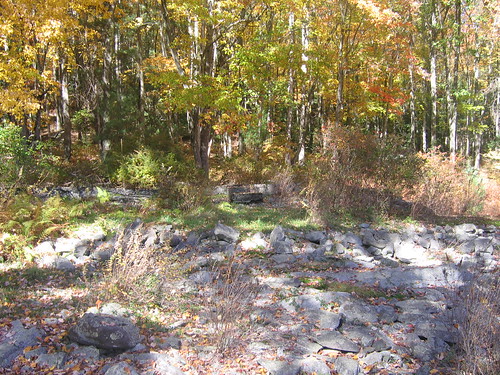
The pavement is now overgrown with moss and raspberries.

Dressed stone steps show where the door once stood.
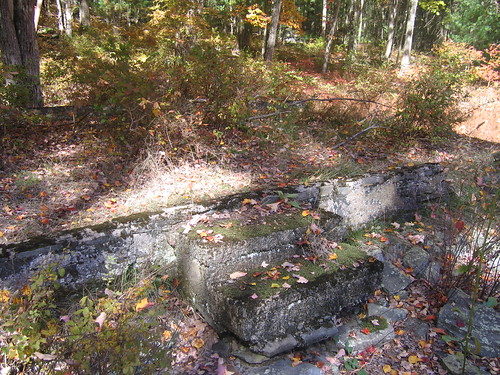
The door hinges lie nearby, half-buried in the leaf mould.
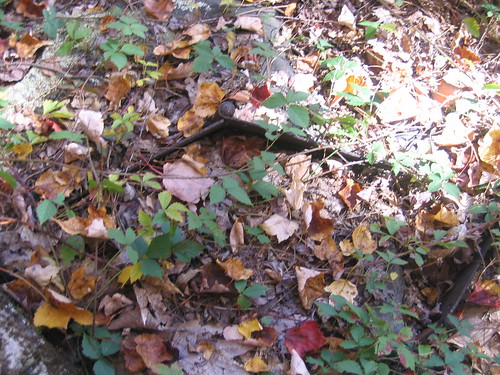
Where chickens once pecked, scrub pine and laurel grow amid the tumbled stones of the foundation.
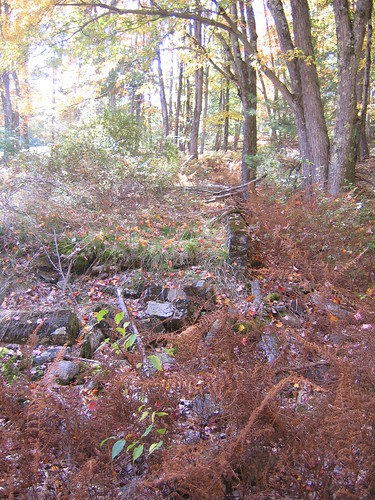
A nail-studded board with a few scraps of shingle shows the roof that once was there.
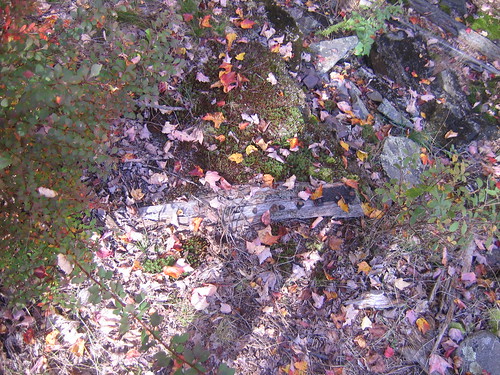
The barn was destroyed by fire in the late 1950s. Its foundations still stand on cleared land.

A lone hollyhock has seeded from the flower garden. By October, its bloom is long since spent, but it stands proud and tall amidst the weeds.
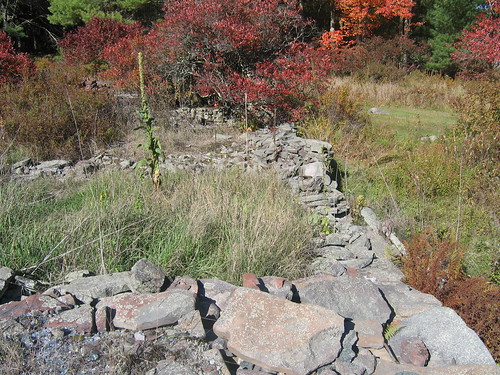
A mass of rusted sheet metal was likely once an oil drum. Oil drums from that period are in and behind all the outbuildings; they were used for everything from trash incinerators to wash boilers to storage for seed.
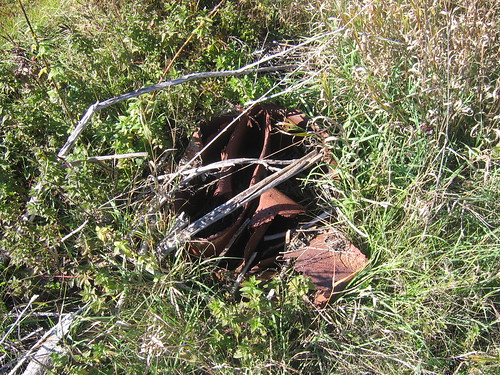
Extra bricks were stacked behind the barn. When next the chimney or the walkway to the house needs mending, the bricks are there.
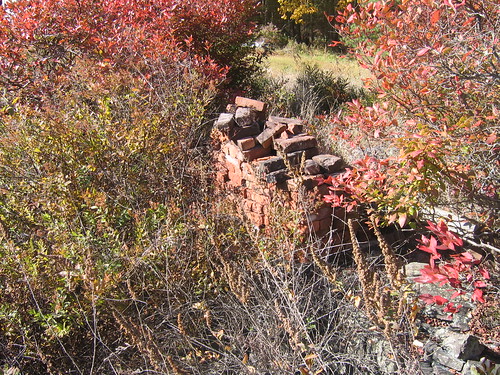
Shattered and melted fragments of glass were once panes set in the barn door.

The melted glass fragments testify to the heat of the fire that burnt the barn.

All along the brook, stone walls kept children and livestock from wandering into the water.
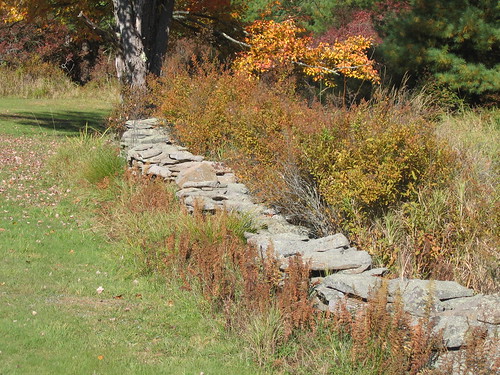
After a wet summer, the dense vegetation hides the flowing water almost completely.
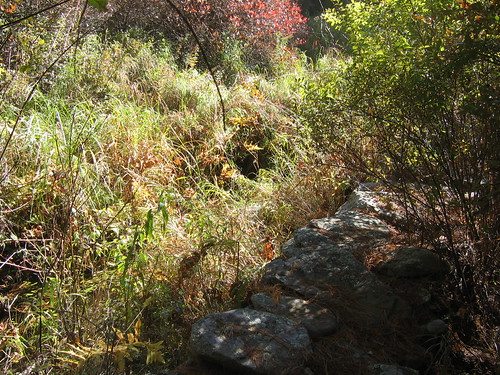
Back in the woods, stone walls that once separated fields now mark the trail where the neighbour rides his quad bike.
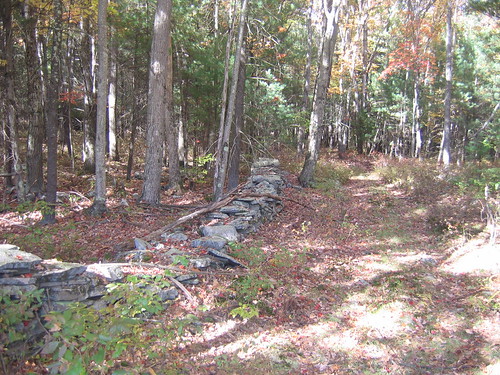
A stand by the swamp allows a neighbour to hunt, where once the land was cleared and cattle grazed.
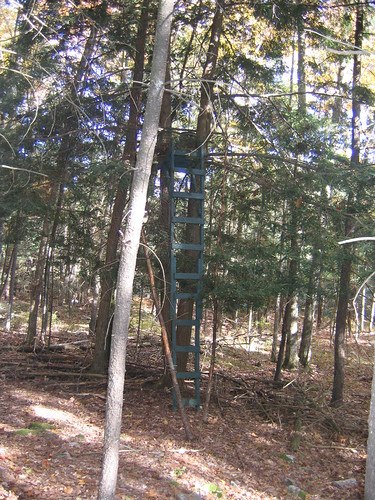
The old apple trees still bear abundant fruit.
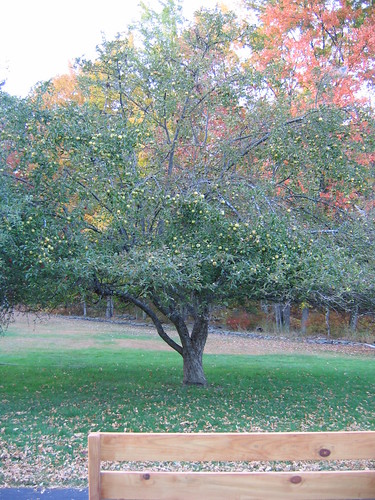
No comments:
Post a Comment